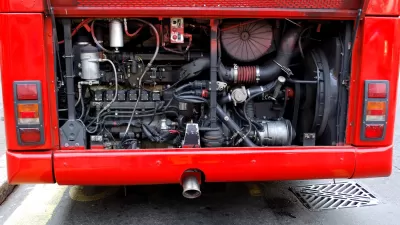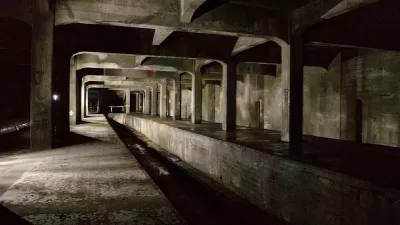Gendered Innovations, a Stanford University project devoted to gender analysis, has revealed that miscategorization has obscured the fact that women ride public transit much more than previously believed, and much more than men.
In the United States women 'chain-trip' much more frequently than men do, and these extended patterns of use are often lost in current data collection methods. "When both partners in a marriage work, women are twice as likely as men to trip-chain a child care task during their commute, and when the couple has a child under five, the amount of trip-chaining - and thus transport burden on women - increases."
Eric Jaffe explains that "once a transit system knows that 'care' trips make up a sizable proportion of daily travel, it can improve its facilities to accommodate these users - replacing stairs with ramps, widening aisles or gates, and raising platforms to train level, for instance, to aid women with strollers and bags. A recognition of the practice of trip-chaining can help designers plan system extensions of transit lines into areas high in care-related sites, like schools and parks. Systems can also conduct what the researchers call "gender audits" to evaluate their ability to meet the transport needs of female riders."
FULL STORY: Public Transportation's Hidden Gender Imbalance

Maui's Vacation Rental Debate Turns Ugly
Verbal attacks, misinformation campaigns and fistfights plague a high-stakes debate to convert thousands of vacation rentals into long-term housing.

Planetizen Federal Action Tracker
A weekly monitor of how Trump’s orders and actions are impacting planners and planning in America.

In Urban Planning, AI Prompting Could be the New Design Thinking
Creativity has long been key to great urban design. What if we see AI as our new creative partner?

King County Supportive Housing Program Offers Hope for Unhoused Residents
The county is taking a ‘Housing First’ approach that prioritizes getting people into housing, then offering wraparound supportive services.

Researchers Use AI to Get Clearer Picture of US Housing
Analysts are using artificial intelligence to supercharge their research by allowing them to comb through data faster. Though these AI tools can be error prone, they save time and housing researchers are optimistic about the future.

Making Shared Micromobility More Inclusive
Cities and shared mobility system operators can do more to include people with disabilities in planning and operations, per a new report.
Urban Design for Planners 1: Software Tools
This six-course series explores essential urban design concepts using open source software and equips planners with the tools they need to participate fully in the urban design process.
Planning for Universal Design
Learn the tools for implementing Universal Design in planning regulations.
planning NEXT
Appalachian Highlands Housing Partners
Mpact (founded as Rail~Volution)
City of Camden Redevelopment Agency
City of Astoria
City of Portland
City of Laramie





























